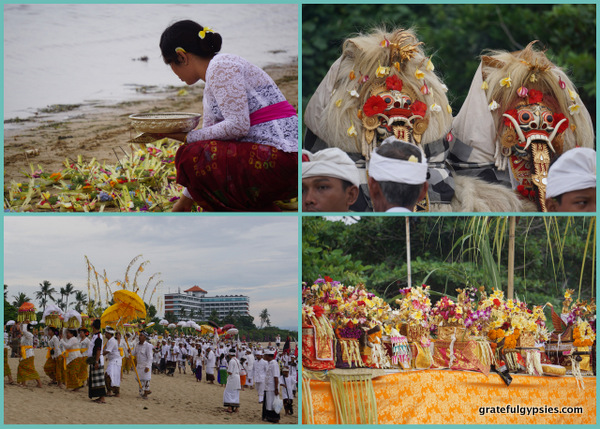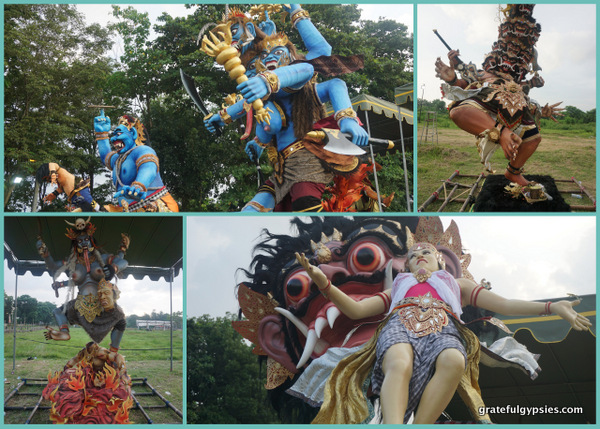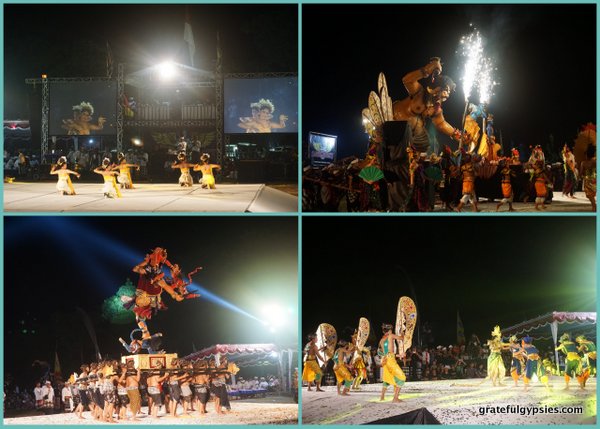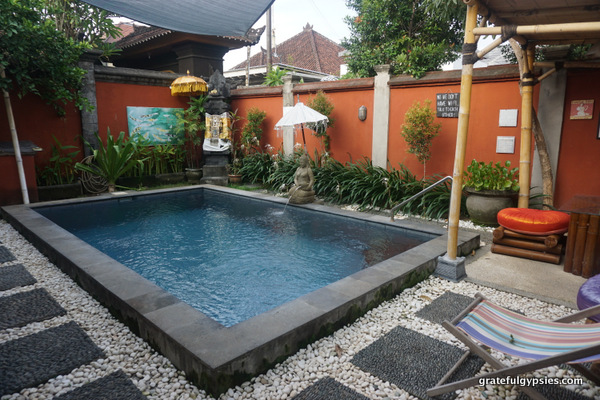A Guide to Nyepi Posted by sasha on Mar 6, 2017 in Uncategorized
Once a year, the entire island of Bali shuts down for a day. The airport is closed, the roads are free of motorbikes, and even Kuta Beach is devoid of action. What’s the occasion? It’s Hari Raya Nyepi, or the Balinese New Year. It occurs on the first new moon of March, which falls on the 28th this year. This is the most important holiday on the Island of the Gods, and it’s meant for fasting, reflection, and meditation. In the lead-up to the Day of Silence, however, there’s a lot going on.
Melasti Ceremony
In the days leading up to the festival, all of the statues of gods are taken out of temples and brought down to the water to be washed. In this colorful ceremony, sacred water is also collected. This ritual is known as melasti and is meant to purify the effigies. Check out some highlights of the melasti ceremony from last year:
Ogoh-Ogoh Festival
On the day before Nyepi – Tawur Kesanga (“Day of Great Sacrifices”) – the Bhuta Yajna ritual takes place in villages all across the island. The purpose of this is to rid Bali of all evil spirits before the new year. Offerings are made by sacrificing animals, and huge monster-like dolls called ogoh-ogoh are made of paper-mache. With bulging eyes, creepy faces, and long claws, they are meant to terrify. After the monsters have been paraded through the village, they are burned in a ceremony known as Ngerupuk. From there, it degenerates into a wild party full of singing, dancing, and drinking. Learn all about these creepy beasts in this short video:
Sanur Ogoh-Ogoh Competition
Last year, the 23 banjar that make up the Sanur area of Bali decided to do something a bit different with their ogoh-ogoh celebration. Rather than the traditional parade – which creates a traffic jam of epic proportions – they decided to do a big competition instead. Each banjar got a few minutes to give a performance with their ogoh-ogoh – telling a short story along with music and dance. The massive crowd sent their choices in via text message, and the winner was crowned well after midnight. See how it all went down in this highlight reel:
Nyepi Day
There’s not a whole lot to say about the actual Day of Silence, because it’s exactly that – silent! The reason for the peace and quiet is so that when the demons descend to take over Bali, they decide the island is uninhabited and leave it alone for one more year. All human activity ceases, and people must stay in their homes (or hotels for tourists). The only people you’ll see out on the streets are the pecalang (village police), who make sure nobody is out and about. There are four main rules, known as Catur Brata:
- Amati Geni: No fire, light, or electricity.
- Amati Karya: No working.
- Amati Lelungan: No movement or travel outside of the home.
- Amati Lelangunan: No entertainment or revelry of any kind.
This silence lasts until 6 AM the next day, when it’s back to business as usual on the Island of the Gods.
While many choose to avoid Bali at this time of year, in my humble opinion it’s an amazing cultural event that you should experience if given the chance. Plenty of Bali expats and tourists hop over to the Gili Islands around Nyepi so they can skip out on the Day of Silence, but they also miss out on the colorful processions and the incredible ogoh-ogoh festival. If you should find yourself in Bali at the end of the month, consider sticking around to take part in the island’s most important holiday. It was without a doubt the highlight of my year living there, and one of the best experiences in all my travels.

Build vocabulary, practice pronunciation, and more with Transparent Language Online. Available anytime, anywhere, on any device.







